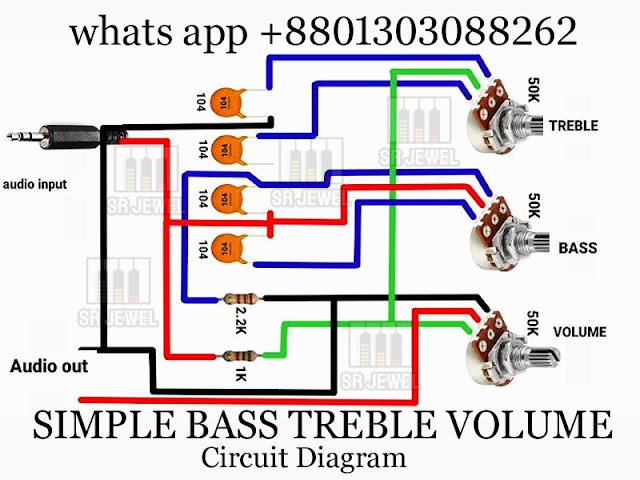Simple Bass Treble Volume Circuit Diagram
Bass Treble Volume Circuit Diagram
Building a Simple Bass, Treble, and Volume Circuit
When it comes to audio electronics, having control over bass, treble, and volume can dramatically enhance your listening experience. Whether you're building your own audio amplifier or working on a custom audio project, incorporating a simple bass, treble, and volume control circuit can provide a great deal of flexibility. In this post, we'll explore how to create a basic circuit diagram for these controls.
What You'll Need
Before we dive into the circuit diagram, let’s gather the necessary components:
Potentiometers:
- 1 for volume control (10kΩ)
- 1 for bass control (10kΩ)
- 1 for treble control (10kΩ)
Capacitors:
- 1 for bass (e.g., 100 µF)
- 1 for treble (e.g., 10 µF)
Resistors:
- Depending on the desired cutoff frequencies for bass and treble.
Input and Output Connectors:
- For audio input and output.
Power Supply:
- As per your audio amplifier’s requirements.
Circuit Diagram
Here's a simplified circuit diagram that outlines how to set up the bass, treble, and volume controls:
How It Works
Volume Control: The volume potentiometer controls the amplitude of the input signal. As you adjust this potentiometer, it varies the resistance and therefore the output level sent to the next stage of your audio circuit.
Bass Control: The bass potentiometer adjusts the low-frequency response of your audio. The capacitor in series with the potentiometer allows only frequencies above a certain point to pass, effectively shaping the bass response.
Treble Control: Similar to the bass control, the treble potentiometer and capacitor shape the high-frequency response. This control boosts or cuts high frequencies based on the position of the potentiometer.
Tips for Optimization
- Choosing Component Values: The values of the capacitors and resistors will determine the frequency response. You can adjust these values based on your specific audio requirements.
- Testing: Once assembled, test your circuit with various music genres to ensure the controls work as intended and that there are no unwanted distortions.
- Enclosure: Consider placing your circuit in an enclosure to protect it from external elements and provide a professional look.
Conclusion
Building a simple bass, treble, and volume control circuit can significantly enhance your audio projects. By using basic components and following the circuit diagram provided, you can create a tailored listening experience that suits your preferences. Feel free to experiment with different component values to find the perfect sound for your needs. Happy tinkering!


No comments